 KURIHARA, Japan-A powerful earthquake rocked rural northern Japan on Saturday, killing at least five people, injuring more than 200 and sparking landslides that sliced mountains, destroyed roads and left residents cut off.The 7.2 magnitude quake struck at 8:43 a.m. (2343 GMT Friday) in Iwate, a sparsely populated, scenic area around 300 km (190 miles) north of Tokyo, where buildings also shook.More than 160 aftershocks rocked the northern area and officials warned more strong quakes might be in store."There's one whole mountain gone. It's all over the road now," said one woman in her 50s, who said she and her husband had been en route to a hot spring resort but had to abandon their car and walk because roads were blocked by a landslide.TV footage showed mountains carved away by the force of the quake, trees fallen into newly slashed ravines, roads ending abruptly at cliffs and bridges buckled and broken. Homes were shown strewn with scattered and smashed belongings."Dishes and spices fell, the microwave came flying and the doors of the refrigerator flew open all in a second," said 58-year-old Kinoko Hayasaka.But experts said the energy released by the quake was far less than the magnitude 7.9 earthquake that hit southwestern China on May 12, leaving nearly 87,000 people dead or missing.Water containing a small amount of radiation leaked within a Tokyo Electric Power Co nuclear power facility in the region, but there was no leakage outside, a spokesman for Japan's biggest utility said.One of the people killed was caught in a landslide, Chief Cabinet Secretary Nobutaka Machimura told reporters. A second man was hit by a car after running out of a building, and a third was killed by falling rocks at a dam construction site.A fourth person died when a car was buried under a landslide, a local official said. Two others were rescued and taken to hospital, but another car was still buried, he added.Two people out of three missing at a work site in Kurihara after a landslide had been found and were in cardiac arrest, a local official said. Kyodo news agency said they were dead.
KURIHARA, Japan-A powerful earthquake rocked rural northern Japan on Saturday, killing at least five people, injuring more than 200 and sparking landslides that sliced mountains, destroyed roads and left residents cut off.The 7.2 magnitude quake struck at 8:43 a.m. (2343 GMT Friday) in Iwate, a sparsely populated, scenic area around 300 km (190 miles) north of Tokyo, where buildings also shook.More than 160 aftershocks rocked the northern area and officials warned more strong quakes might be in store."There's one whole mountain gone. It's all over the road now," said one woman in her 50s, who said she and her husband had been en route to a hot spring resort but had to abandon their car and walk because roads were blocked by a landslide.TV footage showed mountains carved away by the force of the quake, trees fallen into newly slashed ravines, roads ending abruptly at cliffs and bridges buckled and broken. Homes were shown strewn with scattered and smashed belongings."Dishes and spices fell, the microwave came flying and the doors of the refrigerator flew open all in a second," said 58-year-old Kinoko Hayasaka.But experts said the energy released by the quake was far less than the magnitude 7.9 earthquake that hit southwestern China on May 12, leaving nearly 87,000 people dead or missing.Water containing a small amount of radiation leaked within a Tokyo Electric Power Co nuclear power facility in the region, but there was no leakage outside, a spokesman for Japan's biggest utility said.One of the people killed was caught in a landslide, Chief Cabinet Secretary Nobutaka Machimura told reporters. A second man was hit by a car after running out of a building, and a third was killed by falling rocks at a dam construction site.A fourth person died when a car was buried under a landslide, a local official said. Two others were rescued and taken to hospital, but another car was still buried, he added.Two people out of three missing at a work site in Kurihara after a landslide had been found and were in cardiac arrest, a local official said. Kyodo news agency said they were dead.AFTERSHOCKS CONTINUING
NHK national TV put the total death toll at five, with 202 people hurt and 10 missing as aftershocks jolted the region, hampering rescue efforts."The aftershocks are continuing ... so a very careful response is required," Shinya Izumi, the cabinet minister in charge of disaster response, told a news conference."But we also need to rescue people as quickly as possible. It is a very tough situation."Four campers including three non-Japanese, were unreachable, Kyodo added.More than 600 people were cut off in remote areas and military and other helicopters were heading their way, NHK said.Some people in Kurihara, a city with a population of about 80,000, were cooking rice outside in pots over wood fires."We have no water or electricity. No one has anything to eat. So we are making rice balls for everyone," said 65-year-old Yoko Mitsuzuka.Hundreds of homes were without water, but many power outages had been restored within hours of the quake, media said.Experts said casualties could rise as reports came in from isolated areas but the scope of the quake was far smaller than one that struck China a month ago."The seismic energy of the China quake was one order of magnitude greater," Naoshi Hirata, a professor at Tokyo University's Earthquake Research Institute, told Reuters.He added the region's sparse population and Japan's strict building standards had likely limited the impact.Earthquakes are common in Japan, one of the world's most seismically active areas. The country accounts for about 20 percent of the world's earthquakes of magnitude 6 or greater, prompting tough building codes to try to limit damage.In October 2004, a magnitude 6.8 earthquake struck the Niigata region in northern Japan, killing 65 people and injuring more than 3,000. That was the deadliest quake since a magnitude 7.3 tremor hit the city of Kobe in 1995, killing more than 6,400.
As in the days of Noah...
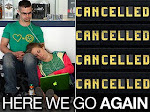
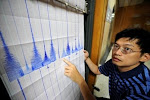
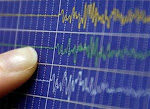
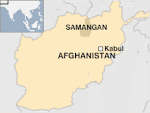







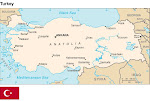
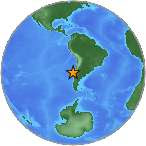




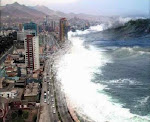

.jpg)

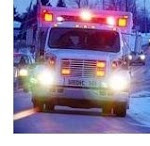
.bmp)
No comments:
Post a Comment